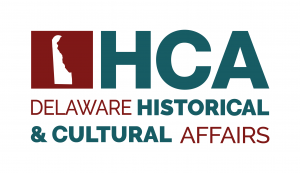Delaware Breakwater East End Lighthouse
(DOVER, Del.—July 10, 2020)—In early summer 2020, contractors began the process of repainting the Delaware Breakwater East End Lighthouse located on the inner breakwater in the harbor of Lewes, Del. The lighthouse is owned by the State of Delaware and administered by the Delaware Division of Historical and Cultural Affairs. The project, which is expected to be completed before summer’s end, includes removal of old paint and rust, and repainting the entire exterior of the structure above its concrete foundation. Paint colors will replicate the existing red-brown and black.
Repainting the lighthouse will involve the presence of scaffolding, equipment, materials and workers on the breakwater as well as the usual noises that go with construction work during daytime hours.
No public access to the lighthouse or the breakwater will be permitted during the project. Under normal conditions, access to the breakwater and lighthouse is prohibited except for accompanied visits conducted by Cape Water Tours which will not resume until the project is completed.
About the Delaware Breakwater East End Lighthouse …
In 1825, Congress authorized the construction of a breakwater at the mouth of the Delaware Bay off Cape Henlopen in order to create a safe harbor for ships seeking refuge during storms. Begun in 1828 and completed in 1841, the Delaware Breakwater was a two-part structure comprised of a breakwater and an icebreaker pier. In 1897, the open space between these two sections was closed. Due to an increase in the size and number of ships seeking refuge in Breakwater Harbor, Congress authorized the construction of a 2nd breakwater approximately 1.25 miles to the northeast of the Delaware Breakwater on a shoal known as “The Shears.” Completed in 1901, this new, outer breakwater created a much larger and deeper safe harbor called the National Harbor of Refuge.
Located on the original inner breakwater, the Delaware Breakwater East End Lighthouse was completed in 1885. The red-brown conical structure is 22 feet in diameter at the base with a 45-foot-tall tower. It was decommissioned in 1996 and was formally conveyed by the United States government to the State of Delaware in 1999. It is as contributing resource of the Delaware Breakwaters and Lewes Harbor, listed in the National Register of Historic Places in 1976, and the National Harbor of Refuge and Delaware Breakwater Harbor Historic District, listed in the National Register in 1989.
The Division of Historical and Cultural Affairs is an agency of the State of Delaware. The division enhances Delaware’s quality of life by preserving the state’s unique historical heritage, fostering community stability and economic vitality and providing educational programs and assistance to the general public on Delaware history. The division’s diverse array of services includes operation of five museums which are accredited by the American Alliance of Museums, administration of the State Historic Preservation Office, conservation of the state’s archaeological and historic-objects collections, operation of a conference center and management of historic properties across the state. Primary funding for division programs and services is provided by annual appropriations from the Delaware General Assembly and grants from the National Park Service, Department of the Interior, a federal agency. However, the contents and opinions expressed in the division’s programs and services do not necessarily reflect the views and policies of the Department of the Interior.
